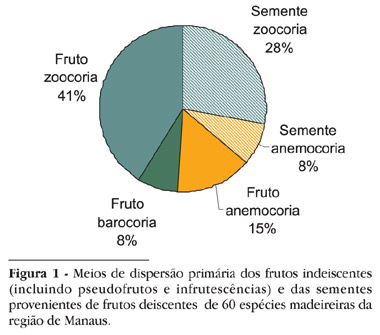The aim of this study was to gather information on timber trees occurring in a non-flooded forest near Manaus and to make an attempt to rank these species according to their succession in the forest. The ranking would be helpful in modeling the forest's dynamics, for forest conservation, management and rehabilitation of degraded areas. The group studied was formed by 60 botanical species belonging to 42 genera and 18 families. In a general view, seed size was >0.5cm3 (69% of the species), seed dispersal by animals predominated (60%), germination occurred within a period of up to 3 months (69%) and wood density was high (>0.8 g/cm3 in 52%). However the set of characteristics did not permit a clear ranking of all species, as characteristics thought to be typical for pioneer or climax occurred together on the same species in 24 of the selected trees (40%). Wood density and fruiting regularity showed to be of little use for classification, as well as the presence of seed dormancy, as dormancy was detected in all successional groups. On the other hand, a distinction between the various types of seed dormancy was helpful to separate the groups. The following seed related characteristics may be recommended for classification: dispersal type, reserve quantity, desiccation tolerance and dormancy types. The attempt of ranking the timber species according to their role in natural succession showed that most had a set of characteristics typical of mature forest. Only a few species had earlier successional characteristics, and probably have higher resistance to forest disturbance.
forest succession; pioneers; opportunists; climax; seeds






